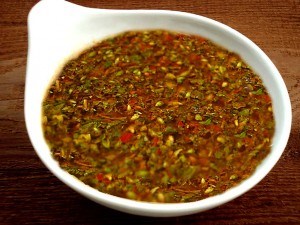The Empanada Empire

The empanada. An essential for any peckish backpacker, lazy party food contributor and Argentine restaurant menu. A simple, stuffed savory pastry that looks innocent enough but carries within its golden pouch one of the longest and richest culinary histories. Where did the empanada come from? We immediately make the assumption by its name it comes […]
Top 5 wines from Patagonia
Recently I’ve been down south exploring the gorgeous wilderness of Patagonia, which definitely needs to be on everyone’s bucket list. At the same time, I’ve been exploring the wine lists and cellars of various dining establishments and here are five fabulous wines to try. Bodega Chacra, Pinot Noir This boutique production winery makes a beautifully […]
The dark knight of Mendoza

For the last three weeks in Mendoza, I’ve only been drinking one variety. It’s abounding with rich, dark fruit, grows particularly well here and is on the lips of most winemakers. Can you guess what it is yet? No, it’s not Malbec. It is the new dark horse of the eighth wine capital… a sort […]
The plunging peso is like a Latin lothario

Written for The Telegraph, 29 Jan 2014 Argentina’s economy is not easy to write about. I’ve had to rewrite this article 15 times. Not just because of my shoddy writing, but because of the shoddy state of the economy. When I started putting pen to paper at the end of December, the exchange rate was […]
Argentina’s 10 Most Expensive Wines

Written for Wine-Seacher, 8 Jan 2014 You won’t see Argentina headlining wine auctions yet, but the world’s fifth-largest producer is beginning to make collectible wines. At this stage, buyers are more likely to have romantic reasons for embracing Argentina, though producers hope that wine investors may soon follow them into the market. “Most of our […]
Getting to grips with Argen-time
Written for The Telegraph, 17 December The first wedding invite is a cardinal moment for every expat. My excitement at opening the envelope was palpable. “You are cordially invited to the happy couple’s wedding party at 01.00 hours.” No, that must be a misprint. Surely that’s a typo for 18.00 hours? Or maybe 21.00? But […]
On the first day of Christmas my true love gave to me… Luigi Bosca Icono!
Greedy as I am, I’m going to open a nice bottle of wine each day that leads up to Christmas. Today a bottle of Luigi Bosca Icono arrived on my doorstep – holidays are coming! A fourth generation family in Argentina, the Arizu clan have been pumping out wine in Mendoza since the Italian immigrant […]
My night in with Angelica…

When you have a good wine in your hands, it can actually be very difficult to open it. I’ve been harbouring a special bottle of 10 year old Angelica Zapata Malbec from Mendoza for a while now and although I have no doubt the wine would keep for a couple more years (I can’t say […]
Interview with Alberto Antonini

An interview with flying winemaker and international consultant, Alberto Antonini. Interviewed for Casa de Uco. Why is the Uco Valley such an exciting wine region? The location is by far the best valley in Mendoza. It’s where you get some very interesting calcareous spots and well drained soils, with warm days to ripen the fruit […]
Chimichurri: A gaucho essential

While a gaucho cookout rarely involves much more than lashings of red meat, plenty of salt, a couple rolls of bread and a bottle of Malbec, or a hip flask of something stronger, the one vegetable-like condiment to usually grace the table is a proper chimichurri sauce. Made of chopped garlic and herbs, this tasty […]

